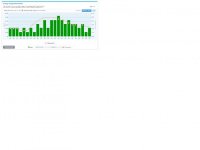Tyler23
New Member
Hi -
I recently replaced a 30 year old, 80 gallon electric water heater with a new Rheem 65 gallon. I replaced it on the same day as my meter is read in April and seemed to be working fine, until I got my next bill and it was $100 higher than my one from the year prior (mild winter for us, no differences in water usage, etc.).
Called Rheem and they walked me through testing the unit with a voltmeter. The upper thermostat is bad so they are sending me a new one. I asked the tech why this would be causing such high bills and he seemed stumped.
The thing is, the water is not too hot so it doesn't seem to be overheating it. Both thermostats have been set to 120 degrees. We have no re-circ pump or anything else unique about this set up.
So my question is: how can a faulty thermostat cause such a spike in usage? It seems like it would make sense if the water was coming out way hotter than what it was set to as it would be constantly heating the water; but that's not the case (temp at the closest tap is 118). If anything, I am finding patches of cold or lukewarm water sometimes.
Any insight would be appreciated. I don't want to get my hopes up that this is going to solve everything. Frankly, I'm missing my old one right now.
Thanks,
Tyler
I recently replaced a 30 year old, 80 gallon electric water heater with a new Rheem 65 gallon. I replaced it on the same day as my meter is read in April and seemed to be working fine, until I got my next bill and it was $100 higher than my one from the year prior (mild winter for us, no differences in water usage, etc.).
Called Rheem and they walked me through testing the unit with a voltmeter. The upper thermostat is bad so they are sending me a new one. I asked the tech why this would be causing such high bills and he seemed stumped.
The thing is, the water is not too hot so it doesn't seem to be overheating it. Both thermostats have been set to 120 degrees. We have no re-circ pump or anything else unique about this set up.
So my question is: how can a faulty thermostat cause such a spike in usage? It seems like it would make sense if the water was coming out way hotter than what it was set to as it would be constantly heating the water; but that's not the case (temp at the closest tap is 118). If anything, I am finding patches of cold or lukewarm water sometimes.
Any insight would be appreciated. I don't want to get my hopes up that this is going to solve everything. Frankly, I'm missing my old one right now.
Thanks,
Tyler

